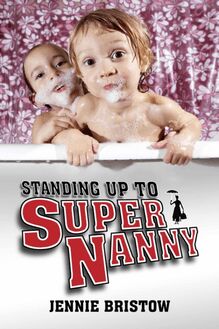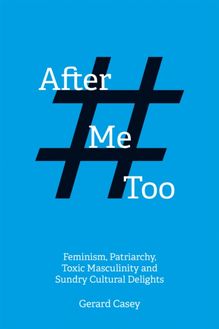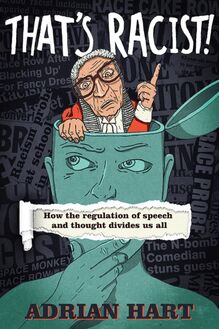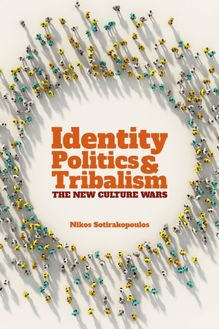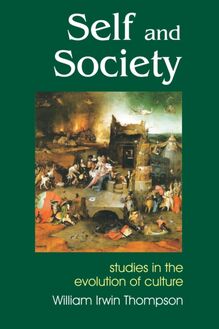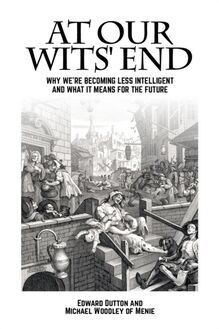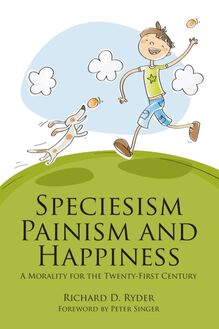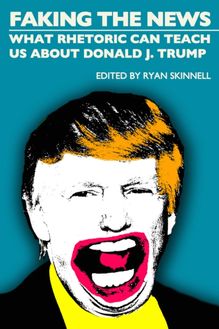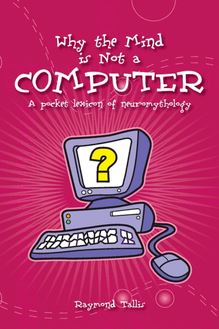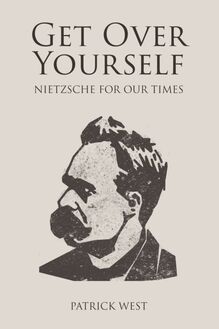That's Racist! , livre ebook
59
pages
English
Ebooks
2014
Vous pourrez modifier la taille du texte de cet ouvrage
Obtenez un accès à la bibliothèque pour le consulter en ligne En savoir plus
Découvre YouScribe en t'inscrivant gratuitement
Découvre YouScribe en t'inscrivant gratuitement
59
pages
English
Ebooks
2014
Vous pourrez modifier la taille du texte de cet ouvrage
Obtenez un accès à la bibliothèque pour le consulter en ligne En savoir plus
Publié par
Date de parution
09 décembre 2014
Nombre de lectures
2
EAN13
9781845407865
Langue
English
Publié par
Date de parution
09 décembre 2014
Nombre de lectures
2
EAN13
9781845407865
Langue
English
Title page
That’s Racist!
How the Regulation of Speech and Thought Divides Us All
ADRIAN HART
SOCIETAS
essays in political
& cultural criticism
imprint-academic.com
Publisher information
Copyright © Adrian Hart, 2014
2014 digital version by Andrews UK Limited
www.andrewsuk.com
The moral rights of the author have been asserted.
No part of this publication may be reproduced in any form without permission, except for the quotation of brief passages in criticism and discussion.
Originally published in the UK by
Imprint Academic, PO Box 200, Exeter EX5 5YX, UK
Originally distributed in the USA by
Ingram Book Company,
One Ingram Blvd., La Vergne, TN 37086, USA
Cover design by Andrew Smith:
www.behance.net/andyartdirector
Acknowledgements
I’m guessing most books are the result of collective efforts, and this one is no exception. That’s Racist! attempts to expand on ideas and arguments first developed with The Manifesto Club ( www.manifestoclub.com ) which campaigns against hyper-regulation in everyday life. I am particularly indebted to Manifesto Club director Josie Appleton for her support and encouragement, and also to the bank of ideas built up over the years by the online current affairs magazine spiked .
The campaigns by East London Workers Against Racism (ELWAR) in the 1980s were my formative inspiration. There is no space to mention everyone from back then, but I cannot go without acknowledging the contribution made by Nigel Lewis, Keith Tompson, and especially Kenan Malik, to working through the challenges posed by both racism and anti-racism.
In getting this book off the ground, heartfelt thanks are due to Rob Lyons, Andy Duck, Lesley Katon, Tim Rich and River Sweeney. Along the way, discussion and encouragement from Shirley Lawes, Daniel Ben-Ami, James Heartfield and Kevin Rooney were vital. But throughout the process of getting these ideas untangled and on paper, there was Jennie Bristow (whom I can’t thank enough). Not least, I couldn’t have written this book without the support and unending patience of Julia Basnett.
Introduction
It’s Monday morning and another workshop in another school. This time the school, in Essex, has quite a few black children and, the council tell us, racist incidents occur regularly. Seated in front of the video camera is a 10-year-old black boy: we’ll call him Joe. Apparently, Joe has been the victim of a number of incidents officially recorded by the school as part of its race equality duties. Before we start I ask Joe if he thinks there is racism in his school. ‘No,’ he says, ‘this is a good school.’ ‘But we heard mention of some problems... things that happened to you?’ I say. Joe looks thoughtful, then smiles. ‘Well, some children say things but I say sticks and stones - you know what I mean?’
I like Joe. He seems older than his years, very funny and very confident. He isn’t finished: ‘You know, it doesn’t matter, the colour of your skin. It’s what’s on the inside that counts.’
Later, as the break-time bell rings, Joe darts off to join his friends in the playground. The two young drama tutors in charge of the anti-racism day discuss Joe’s reluctance to acknowledge his experience of racism. As I listen to my colleagues talk I look out of the classroom window. There must be a hundred or more children in the playground. This interests me because it’s their world - if I could have my way, the anti-racism video that I have been hired to make for the council would be filmed out there, rather than in workshops. Joe has joined a group of friends and they’re all leaping around, wide-eyed as though they had just heard the entire Arsenal team were visiting the school. They mob-wrestle each other and collapse to the ground giggling. Suddenly they leap up and disperse in all directions.
I look for Joe. He’s now at the far end of the playground. How did he get there so fast? Now huddled with a completely different group of boys, Joe has produced a set of football cards. My drama tutor colleagues are wondering if Joe is either ‘in denial’ of racist bullying or just too frightened to speak up.
I think it was this moment that triggered the questions. The first was ‘Does this school really have a problem with racism?’ The teachers were unanimous on that one - ‘absolutely not’. They were adamant that this was a lovely school and assumed I knew that the council required them to identify and report ‘all manifestations of racism, however trivial they may seem’. I had been naive about the purpose of ‘racist incident reporting’. But it was the contrast between the exuberant playground of children and the ‘racism awareness’ drama workshops they were about to attend that prompted the second question: What the hell were we doing here?
I wrote these paragraphs back in 2007. The Essex primary schools project, titled Watch out for Racism! , had run for most of the previous year. By the time it ended, all I wanted to do was to put my camera away and research, write and make sense of the disquieting phenomenon I had observed.
It was bad enough that teachers had felt obliged to record anything and everything that might be perceived as a racist incident. One head teacher later told me how awkward it was handling incidents involving six- and seven-year-olds: ‘The child concerned hasn’t made any complaint at all, but one of my staff has felt that there’s been an element of racism. We’ve had a few where the children are best friends and so the trick is to try and handle the thing without it breaking up the friendship or instilling the idea of racism when really they haven’t any idea what that is.’
But even our workshops, explicitly designed to explain race issues, brimmed with the potential to confuse and divide. Why, when the children were inventing their own intrinsically anti-racist playground community, were they required to ponder the importance of ‘race’ and ‘identity’? Those early questions began a process which led to the publication, in 2009, of The Myth of Racist Kids: Anti-Racist Policy and the Regulation of School Life . [1]
By then, I had made some sense of the Essex project. At the beginning of 2006, when I was hired as the project’s filmmaker, both myself and my drama tutor colleagues had been informed we were to visit four schools experiencing ‘problems’ in relation to their pupils and ‘incidents’. As the project brief had passed from Essex council to the London-based young people’s theatre that was to deliver it, the idea that the county’s schools were in express need of an anti-racism intervention was simply presumed.
For me, the project was immediately at odds with the reality we encountered in these schools. Relatively large numbers of kids from black, Asian and mixed backgrounds merged and, unsurprisingly, they played happily with the majority. It seemed to me that these schools were not experiencing problems: they were simply carrying out a government requirement to record ‘racist incidents’. For the teachers, the fact that the children would sometimes fall out and pick on each other’s differences was entirely unremarkable.
Yet for Essex council, there certainly was ‘a problem’ - in that schools were not recording incidents enough. When I unearthed council documentation from its website, the impetus for launching anti-racist interventions became clearer. [2] The council’s assessment of the previous three years’ ‘racist incident’ figures was that too few schools were submitting data; in many cases none at all. In response to this, it proposed letters to ‘under-reporting’ schools, pointing out that ‘high levels of reported incidents are the result of good practice rather than the converse’. Compliant schools, noted the council approvingly, were using ‘zero tolerance’ policies to generate the desired figures. These were the schools to which we had been sent, where it had been understood that incidents must be recorded ‘however trivial they may seem’.
‘You can’t win this one’, said one despairing head teacher. ‘If you don’t report incidents you’re told you’re not being aware of racism; if you do report it, there’ll be someone who decides there’s a major problem in the school.’ Eager to assist in my research, another Essex head sent me a selection of incident forms. A typical incident in her school was a playground spat in which ‘child A’ had called ‘child B’ a ‘chocolate bar’ or ‘white trash’.
However, the council had another problem. The zero tolerance dragnet was proving itself most effective amongst nine- to 11-year-olds: arguably an age group for whom ‘inappropriate’ banter and insult exchange and mistaken use of adult terms is standard practice. And so it seemed the council wanted to tick two boxes at once: it wanted schools to report more incidents and thereby demonstrate their vigilance, and it felt obliged to show it was doing something to counter racism among nine- to 11-year-olds.
One solution, apparently, was our project. Alongside staff training and racism awareness components within Personal, Social and Health Education (PSHE) and Citizenship classes, one further ‘action to be taken’ was Watch out for Racism! By commissioning this project Essex hoped ‘to help schools address issues of racism in/with pupils’ and remind teachers of their responsibilities in ‘responding to racist incidents’. To this end, it was proposed that the project’s DVD and educational pack would be distributed to all of Essex’s primary schools as a Key Stage 2 educational resource.
Making sense of the Essex project was, therefore, something of a ‘catch-up’ moment for me. It was the moment when I realised that schools were becoming shackled to a divisive and cynical policy that, once implemented, produced statistics that triggered ‘actions’ that, in turn, pro
